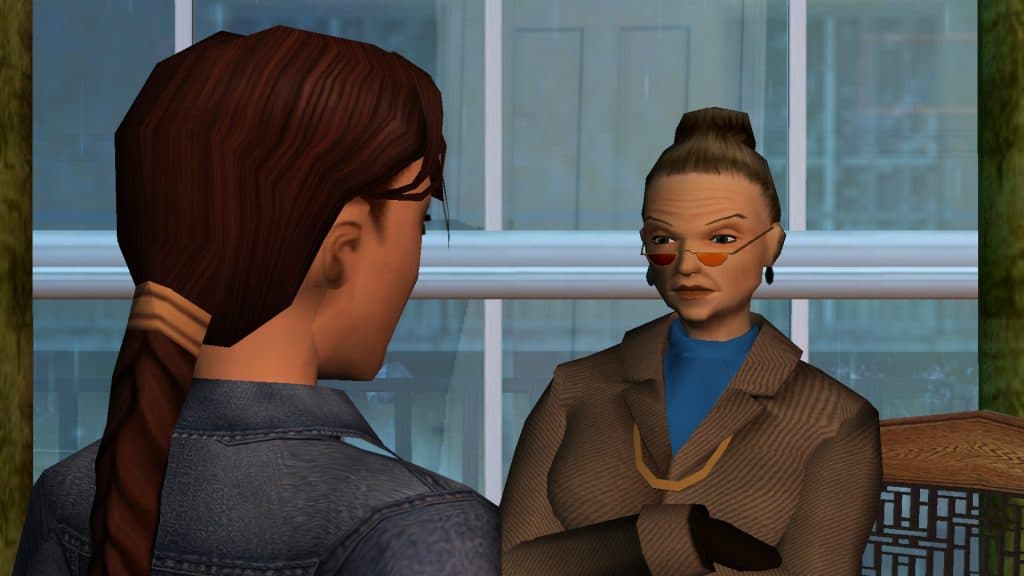The Darker Side of Lara
Annabelle is a crazy cat lady in her late 20s, living in Cologne. She has been a huge Tomb Raider since her childhood and after school and therefore decided to study archaeology. Now she’s working for a small tour operator and enjoys adventure while traveling.

I still remember, when The Angel of Darkness was released I was not quite as happy with the makeover that Lara had received for her PlayStation2 debut as I am now. She looked so different from the Lara I was used to. Way more grungy, with her hair more of a reddish tone than the familiar hazelnut colour and thick black liner applied to her eyes. Even her clothing lacked all the bright colours from before. So before I had the chance to dive deeper into the story, I had no doubt at all that the title “Angel of Darkness“ referred to Lara herself. While I think appearance-wise AoD-Lara is definitely the darkest Lara, I feel like character-wise it is a whole different story.
In the opening sequence, Lara has a rather heated discussion with Werner. Considering the ending of Chronicles, Lara’s anger is probably based on a misunderstanding. She’s accusing him of leaving her behind in Egypt. She’s extremely mad and she makes her point very clear, even acting physically aggressive towards Werner. What I consider really interesting about that scene, is that we only get to hear about the story that precedes it – obviously Werner has reached out to Lara for help and despite what Lara thinks has happened between them, she has come all the way to Paris and is willing to listen to him. Except for the interaction with Jean-Yves in The Last Revelation, I think this is pretty much the only display of true friendship we have ever seen of Classic Lara. The same applies when Lara refers to Werner as a friend during her conversation with Carvier.

“Werner was my friend.”
This seems to be a crucial point when it comes to understanding Lara’s behaviour. For the first time, Lara is losing her cool composure. And I feel like the best examples for that are found in some quite subtle scenes, that may easily go unnoticed. One of the earlier examples is the way she talks to Pierre. She threatens him in a way that feels unnecessarily harsh and seems driven by the strong determination already known from previous games, but with Werner, it is combined with a strong emotional component and despair that is kind of new to her character.
Another small moment that stood out to me that gives a hint of a softer and more vulnerable side that we haven’t really seen before, is when she is thanking Bouchard for dropping her off at Von Croy’s apartment. She seems exhausted, relying on a stranger’s help. A rather compassionate gesture is shown later in the game, when Luddick is killed by Eckhard and Lara turns away, clearly shaken and not being able to look at what’s happening to him.

Of course, her interaction with Kurtis also defines Lara and would make a great article on its own. However, I would like to have a brief look at one scene in particular. When Kurtis is held captive by Eckhard, Lara hands over the painting in exchange for his life. Considering that Kurtis has gone from a shady stranger to a handy acquaintance at best, this is quite an unexpectedly caring move for the same woman, who once let Pierre fall to his potential death in cold blood after he basically just saved her life.
To cut a long story short: I think Angel of Darkness is not the darkest characterisation of Lara, but more likely the most emotionally complex depiction of Lara, being thrown into the darkest scenario up until this point.
I’ll admit that all of the above is based on a very personal reception and may seem like a bit of a far reach to some. But I think that this room for interpretation only shows how brilliantly nuanced the game tells it’s story and how much there’s still left to explore.